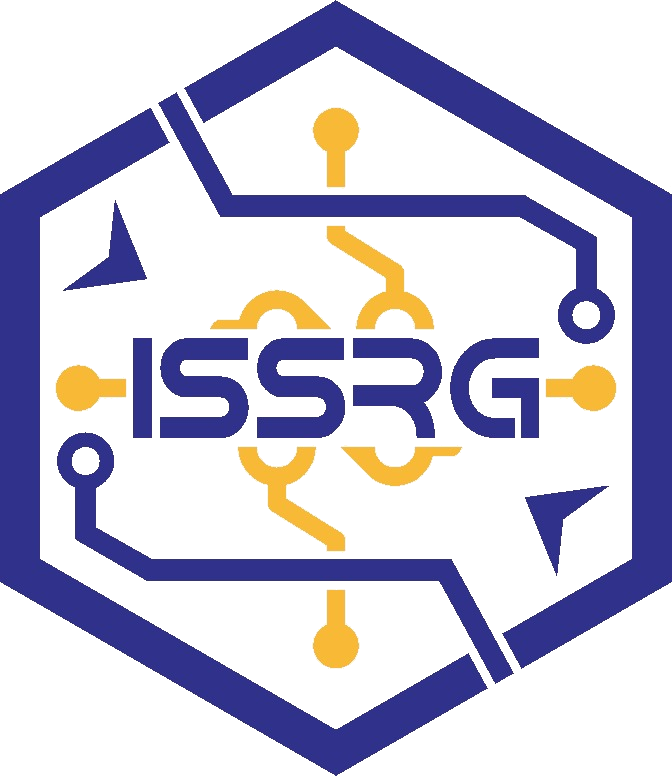Polynomial Regression Method and Support Vector Machine Method for Predicting Disease Covid-19 in Indonesia
Abstract
Full Text:
PDFReferences
E. E. Brown, S. Kumar, T. K. Rajji, B. G. Pollock, and B. H. Mulsant, “Anticipating and Mitigating the Impact of the COVID-19 Pandemic on Alzheimer’s Disease and Related Dementias,” Am. J. Geriatr. Psychiatry, vol. 28, no. 7, pp. 712–721, 2020, doi: 10.1016/j.jagp.2020.04.010.
S. Ezzikouri, J. Nourlil, S. Benjelloun, M. Kohara, and K. Tsukiyama-Kohara, “Coronavirus disease 2019—Historical context, virology, pathogenesis, immunotherapy, and vaccine development,” Hum. Vaccines Immunother., vol. 16, no. 12, pp. 2992–3000, 2020, doi: 10.1080/21645515.2020.1787068.
C. N. Villavicencio, J. J. E. Macrohon, X. A. Inbaraj, J. H. Jeng, and J. G. Hsieh, “Covid-19 prediction applying supervised machine learning algorithms with comparative analysis using weka,” Algorithms, vol. 14, no. 7, 2021, doi: 10.3390/a14070201.
D. Telaumbanua, “Urgensi Pembentukan Aturan Terkait Pencegahan Covid-19 di Indonesia,” QALAMUNA J. Pendidikan, Sos. dan Agama, vol. 12, no. 01, pp. 59–70, 2020, doi: 10.37680/qalamuna.v12i01.290.
Bappenas, Proyeksi COVID-19 di Indonesia. 2021.
F. S. D. Arianto and N. P, “Prediksi Kasus Covid-19 Di Indonesia Menggunakan Metode Backpropagation Dan Fuzzy Tsukamoto,” J. Teknol. Inf., vol. 4, no. 1, pp. 120–127, 2020.
M. N. Kholis, Fraternesi, and L. O. Wahidin, “Prediksi Dampak Covid-19 Terhadap Pendapatan Nelayan Jaring Insang Di Kota Bengkulu,” ALBACORE J. Penelit. Perikan. Laut, vol. 4, no. 1, pp. 001–011, 2020, doi: 10.29244/core.4.1.001-011.
W. M. Baihaqi, M. Dianingrum, and K. A. N. Ramadhan, “Regresi Linier Sederhana Untuk Memprediksi Kunjungan Pasien di Rumah Sakit Berdasarkan Jenis Layanan dan Umur Pasien,” J. SIMETRIS, vol. 10, no. 2, pp. 671–680, 2019.
F. R. Pratikto, “Prediksi Akhir Pandemi COVID-19 di Indonesia dengan Simulasi Berbasis Model Pertumbuhan Parametrik,” J. Rekayasa Sist. Ind., vol. 9, no. 2, pp. 63–68, 2020, doi: 10.26593/jrsi.v9i2.4018.63-68.
N. Nuraini, K. Khairudin, and M. Apri, “Modeling Simulation of COVID-19 in Indonesia based on Early Endemic Data,” Commun. Biomath. Sci., vol. 3, no. 1, pp. 1–8, 2020, doi: 10.5614/cbms.2020.3.1.1.
R. Rustan and L. Handayani, “the Outbreak’S Modeling of Coronavirus (Covid-19) Using the Modified Seir Model in Indonesia,” Spektra J. Fis. dan Apl., vol. 5, no. 1, pp. 61–68, 2020, doi: 10.21009/spektra.051.07.
H. A. Parhusip, “Study on COVID-19 in the World and Indonesia Using Regression Model of SVM, Bayesian Ridge and Gaussian,” J. Ilm. Sains, vol. 20, no. 2, p. 49, 2020, doi: 10.35799/jis.20.2.2020.28256.
R. Gunawan, Metodelogi Tindakan Action Research. 1970.
T. P. Velavan and C. G. Meyer, “The COVID-19 epidemic,” Trop. Med. Int. Heal., vol. 25, no. 3, pp. 278–280, 2020, doi: 10.1111/tmi.13383.
J. Cui, “Origin and evolution of pathogenic coronaviruses,” Nat. Rev. Microbiol., vol. 17, no. March, pp. 181–192, 2019, doi: 10.1038/s41579-018-0118-9.
C. M. Jonassen et al., “Molecular identification and characterization of novel coronaviruses infecting graylag geese (Anser anser), feral pigeons (Columbia livia) and mallards (Anas platyrhynchos),” J. Gen. Virol., vol. 86, no. 6, pp. 1597–1607, 2005, doi: 10.1099/vir.0.80927-0.
Z. Song, Y. Xu, L. Bao, L. Zhang, P. Yu, and Y. Qu, “From SARS to MERS , Thrusting Coronaviruses into,” Viruses, vol. 11, 59, no. November 2002, 2019, doi: 10.3390/v11010059.
Z. Hao, V. P. Singh, and Y. Xia, “Seasonal Drought Prediction: Advances, Challenges, and Future Prospects,” Rev. Geophys., vol. 56, no. 1, pp. 108–141, 2018, doi: 10.1002/2016RG000549.
D. A. J. Tyrrell, M. L. Bynoe, and B. Hoorn, “Cultivation of ‘Difficult’ Viruses from Patients with Common Colds,” Br. Med. J., vol. 1, no. 5592, pp. 606–610, 1968, doi: 10.1136/bmj.1.5592.606.
B. Sun, H. Liu, S. Zhou, and W. Li, “Evaluating the performance of polynomial regression method with different parameters during color characterization,” Math. Probl. Eng., vol. 2014, no. 3, 2014, doi: 10.1155/2014/418651.
G. Santosa, U. Kristen, and D. Wacana, “Data Mining Pemodelan Regresi Polinomial Terhadap IHSG dan Uji Keterikatan dengan Kenaikannya,” in Gunawan Santosa, 2014, no. October.
A. S. Ritonga and E. S. Purwaningsih, “Penerapan Metode Support Vector Machine ( SVM ) Dalam Klasifikasi Kualitas Pengelasan Smaw ( Shield Metal Arc Welding ),” Ilm. Edutic, vol. 5, no. 1, pp. 17–25, 2018.
N. Cristianini, “An Introduction to Support Vector Machines and Other Kernel-based Learning Methods.” 2000, [Online]. Available: http://sutlib2.sut.ac.th/sut_contents/H84963.pdf.
C. Campbell and Y. Yiming, Learning with Support Vector Machines (Synthesis Lectures on Artificial Intelligence and Machine Learning). 2011.
V. N. Vapnik, The Nature of Statistical Learning Theory, 1st ed. USA: Springer-Verlag, 1995.
W. Wang, C. Men, and W. Lu, “Online prediction model based on support vector machine,” Neurocomputing, vol. 71, no. 4–6, pp. 550–558, 2008, doi: 10.1016/j.neucom.2007.07.020.
S. Gunn, Support Vector Machines for classification and regression, 3rd ed., vol. 135, no. 2. 1998.
P. Subagyo, Forecasting Konsep dan Aplikasi. Yogyakarta: BPPE UGM, 1986.
M. A. Maricar, “Analisa Perbandingan Nilai Akurasi Moving Average Dan Exponential Smoothing Untuk Sistem Peramalan Pendapatan Pada Perusahaan XYZ,” J. Sist. dan Inform., vol. 13, no. 2, pp. 36–45, 2019.
I. Nabillah and I. Ranggadara, “Mean Absolute Percentage Error untuk Evaluasi Hasil Prediksi Komoditas Laut,” JOINS (Journal Inf. Syst., vol. 5, no. 2, pp. 250–255, 2020, doi: 10.33633/joins.v5i2.3900.
DOI: http://dx.doi.org/10.26798/jiss.v2i1.931
Article Metrics
Abstract view : 909 timesPDF - 620 times
Refbacks
- There are currently no refbacks.
Copyright (c) 2023 Bambang Purnomosidi Dwi Putranto, Moh. Abdul Kholik
This work is licensed under a Creative Commons Attribution-ShareAlike 4.0 International License.
- https://jurnal.narotama.ac.id/
- https://www.spb.gba.gov.ar/campus/
- https://revistas.unsaac.edu.pe/
- https://proceeding.unmuhjember.ac.id/
- https://ejournal.uki.ac.id/
- https://random.polindra.ac.id/
- https://scholar.ummetro.ac.id/
- https://ejournal.uika-bogor.ac.id/
- https://www.iejee.com/
- https://e-journal.iainptk.ac.id/
- https://journal.stitpemalang.ac.id/
- https://revistas.unimagdalena.edu.co/
- https://catalogue.cc-trieves.fr/
- https://revistas.tec.ac.cr/
- https://jurnal.poltekapp.ac.id/
- https://ojs.ucp.edu.ar/
- https://ihcway.sakura.ne.jp/
- http://www.apps.buap.mx/
- http://media-ojs.vls.icm.edu.pl/
- https://saber.unioeste.br/
- https://cinnda.org/
- https://jurnal.untidar.ac.id/
- https://ojs.adzkia.ac.id/
- https://supp.journalrmc.com/
- https://journal.thamrin.ac.id/
- https://ejurnal.unima.ac.id/
- https://journal.umpalopo.ac.id/
- https://ejournal.upnvj.ac.id/
- https://journal.ittelkom-pwt.ac.id/
- https://ojs.unpatompo.ac.id/
- https://jurnal.staim-probolinggo.ac.id/
- https://jurnal.ppi.ac.id/
- https://revistas.urp.edu.pe/


1.png)



